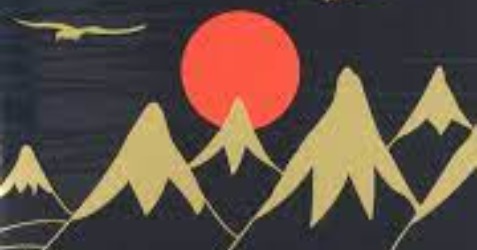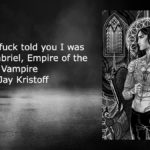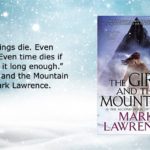The Hobbit tells the story of Bilbo Baggins who sets out on an unlikely adventure to recover a stolen treasure with a band of dwarves and a wizard. It takes place roughly eighty years before LOTR; and though mostly an original cast, there are memorable characters represented within the following trilogy: Bilbo, Gandalf, Gollum. This is a story that warns against the dangers of greed and how we all need one another to survive. It is also a much darker tale than I remember while growing up and towards the end becomes clear to me why Bilbo was chosen to partake in their journey.
The writing itself is somewhat different from LOTR from what I can remember. As I recall the trilogy was written in a bit of an old English type of style—that is not matched in this. Although the point of view for the most part remains the same, it is not as complicated.
Beginning with the arrival of Gandalf, Bilbo yet to have gone off on his adventures, he is wary of the wizard and does not wish to leave home, and is torn between the two sides of his family. On one hand he is a Took, which welcomes the adventure and wishes him to live a life of excitement, but on the other hand there is the Bagginses side that is less venturing and does not wish to partake in such matters. Even to the point of turning one’s nose at the prospect.
This is an interesting way for Bilbo to turn down the Call to Adventure that takes place during the early beginnings of the story. The Bagginses are a respectable part of the community and would have nothing to do with galavanting off for one’s claim to fame or fortune, which is Bilbo’s initial reaction. The following day when the Dwarves show up and Gandalf returns, he is still there and there is still little of him that wants anything to do with their troubles, so he is essentially pushed out of his comfort zone by Gandalf to have a hand in the adventure. But as time goes on, the Took side of him finally begins to take root and he finds himself enjoying his time with these new acquaintances and new friendships begin to form.
Like LOTR, The Hobbit is told from an omniscient perspective as if Tolkien himself is telling us the tale. An all-knowing narrator that knows both past and present as well as how the story ends and what is to follow beyond that. The point of view mainly sticks to the traveling party, but it does switch up here and there to offer others as well which is important in understanding the resolution.
I would say the core of this story is the message that triumph and prosperity occur when everyone shares and shares alike and is somewhat stated near the end in more or less words. Nothing but trouble ever comes when one tries to steal, horde, or hide great fortune. This is made clear through the various subplots that Bilbo and the Dwarves encounter on their journey towards the Lonely Mountain: goblins, trolls, humans, and more show the troubles that lie ahead when one wishes to keep everything to one’s self.
Something that is evident with Bilbo’s character from the beginning is that he isn’t a greedy sort of character and isn’t even particularly interested in setting out in the first place. The Baggins in him would be more content to simply lounge about at home and have tea and breakfast. In this sense, Bilbo’s character rounds out the party fairly well as the dwarves are typically known to be a greedy bunch.
Thorin Oakenshield’s character also ties into this and his quest to recover the gold under the Lonely Mountain. His almost seemingly obsession with the Arkenstone which is described as a great jewel with a flickering sparkle of many colors is worth a great deal to him and the lengths that he is willing to go through to keep and protect what is his given their circumstances paints a dark picture for what can happen to us.
The story is slower paced with lots of world-building, magic, and singing as the group sets out on their adventure across the land. The early call to adventure helps to compensate for this. As it’s made clear very early on in the story what the main plotline is going to be about, this gives more time afterward to show us what it’s like to live as a hobbit so that this type of setting can be further contrasted as they set out about their adventure to the Lonely Mountain. As they go on their journey, they meet many interesting and magical people and places along the way. Beorn and the wood-elves and the eagles are a few of the interesting sorts they come across. Beorn is a shapeshifter that can transform himself; the wood-elves are a bit mystifying as Gandalf is, and the eagles are also interesting in their own way.
The elves to me seem to be the most magical group of all, not to be confused with the wood-elves—which are very magical. There is an interesting rune magic that was created by the elves that involves the moon and alignment of celestial bodies which needs to be understood to find the treasure (not to mention all the magical weapons they created). Though the runic hard-based magic system of the elves is part of the world, like LOTR Gandalf’s magic is always a bit wondrous. One never really knows what the wizard is capable of, which makes his character that much more mysterious.
This is a really fun story with a good message at its core that does more than teach about the dangers of greed and isolating oneself self from the rest of the world. It also speaks of friendship and courage as Bilbo finds himself in a moral predicament that many would abandon. Bilbo stays true to the friends that he’s made and never leaves them, no matter how dire the situation becomes but stays and tries to find a way to help everyone find a suitable resolution.



